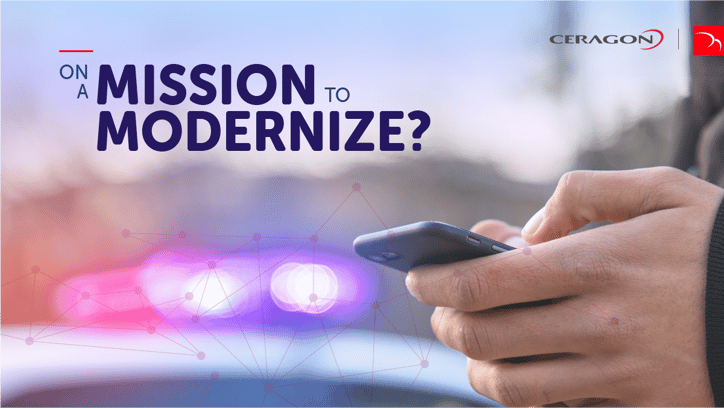Long gone are the days when having a robust and reliable communications system was “nice to have” and only available to highly modernized and funded agencies. Today, everyone needs to be connected, 24 hours a day, 7 days a week, regardless of terrain, weather, or the size of your agency.
Today’s networks, and the myriad of applications they support, require a variety of technologies (Transport, Access, Core Networking) as well as a variety of engineering expertise to not only properly design and deploy the networks, but to also maintain and support.
The inner and interworking of the various technologies is the key in deploying these complex modern networks that are robust, reliable and offer the utmost operational efficiency to any organization. Although a base of knowledge and expertise is needed, designing, and deploying the network is the easy part. The greater challenge lies in supporting and planning for maintenance cycles – which requires significant collaboration and communication between those that support and maintain the system and the personnel using it. A modern-day public safety wireless network is a dynamically evolving system. It must be an always-available, never-failing, high-capacity, ultra-fast system that is capable and flexible enough to support the current mission and a multitude of applications - all of which are constantly becoming more complex and changing on the fly.
If you ask any public safety first-responder “What is the one thing you rely on most?”, most, if not all, will say their communication devices. For the seasoned generation, most would likely choose their P25 two-way handset. The upcoming generation will more likely reference their smartphones, or other more current devices, that run the multitude of applications that help make their jobs more efficient and secure. In either case, communication is the key. The ability to have a robust and reliable network that is always on and that they can rely on - for whatever, wherever, and whenever they need it – is vital.
The point here is to emphasize the importance of the overall unified network, regardless of the devices or technology used. Network and radio frequency (RF) engineers responsible for designing these systems need to consider ALL stakeholders, both radio (LMR) and mobile (LTE) users, as well as the various other elements that play a critical part in these networks. All of which are essential to supporting the mission.
When you talk about the Transport layer, you are primarily looking at two possible vehicles -Wireless (Broadband, Satellite) and Wired (Fiber).
Unfortunately, there is usually no single solution for these networks. A well-planned network will take advantage of wireless transport along with fiber connectivity and use satcom in specific cases. By using a multitude of technologies, you can leverage the benefits of each, and ensure you have a custom, fit-for-purpose deployment that answers your specific needs.
Despite many advances in technology, there is still a pre-conceived notion that when dealing with mission-critical communications, wired is the way to go. But is that really the case? Why is that so?
The Wireless Way – Benefits:
Unified Networks: Wireless transport has come a long way and has some unique capabilities in the delivery of services, new application drivers, as well as support of legacy networks. The backbone for public safety interconnects similar and dispersed systems and networks, and wireless transport can simultaneously support both legacy TDM networks as well as more modern IP-based applications. Unifying disparate networks into one homogeneous network that can run as one smooth entity, can save headaches and disabling downtime.
Future-Proof: One concern surrounding any technology investment is the product life cycle and the amount of time before your acquisition becomes obsolete. Wireless transport is future-proof since it is IP-based and in most cases can be upgraded or enhanced via software or minor infrastructure upgrades. And this is important when considering the next-generation applications that are being implemented across the public safety agencies. Read more about critical-mission digital transformation in this blog article.
Some typical ways a wireless system can assist in the successful delivery of content in a public safety broadband network include:
- Providing broadband connectivity to a building, campus, or emergency operations center (EOC) that may not have access to fiber. This would allow for the backhaul network to be extended where public safety has complete control of the connection.
- Offering a fail-safe solution to protect critical connections that may use terrestrial services like fiber. The redundant path created using wireless ensures a completely different path so that, in the event of a disruption, the wireless path can be used to ensure that the critical link(s) remain functional.
- Providing connectivity for a temporarily deployed asset. The temporary assets in support of a mission or incident can include search and rescue, multiple-agency responses, or natural disaster recovery response to mention a few.
- Providing flexibility for various applications, such as closed caption television, CCTV or other monitoring applications. A robust, reliable wireless network can effectively transport large packets of data to allow live streaming, or applications that enable facial/tattoo recognition software. Read more about facilitating multimedia in public safety.
- Vehicular Area Network (VAN) connectivity. In-field personnel depend on robust connectivity for numerous devices, video feeds, and applications, including radio in vehicle, handheld devices, body worn cameras, license reading gear, vehicle on-board cameras, laptops, weapon sensors, vehicle diagnostics and more.
Summary
The requirements for first responders have and will continue to change dramatically, partially driven by a host of sophisticated applications that are becoming crucial to the operating procedures of any public safety entity. Wireless networks not only meet today’s data-rich demands but can also support legacy networks and function as a baseline supporting future enhancements and technology adoption based on its inherent flexibility and adaptability.
The requirements and needs of public safety organizations continue to evolve, and wireless communications will continue to play a critical role in meeting these needs. Ceragon offers a wide variety of technology solutions to help public safety organizations as they move from the “nice to have” technology perspective of the past to the “must have” reality of today.
Download our brochure to find out more


